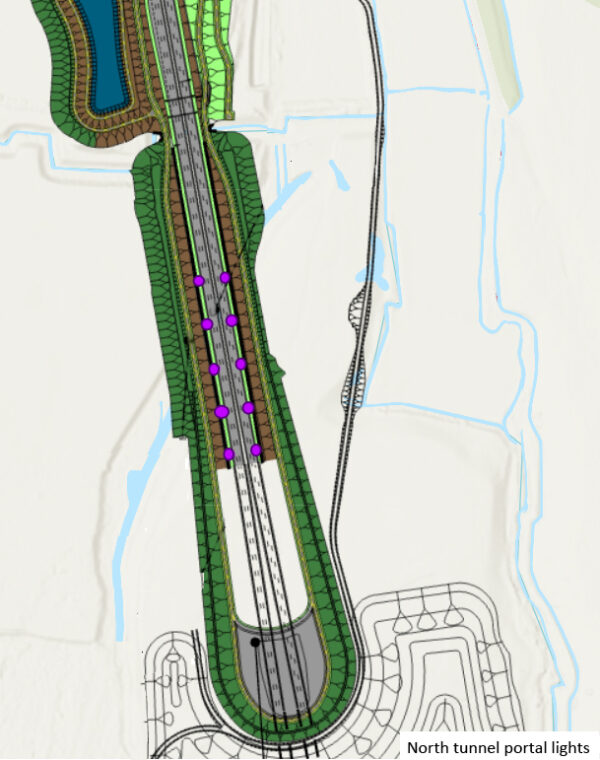LTC – Light pollution
When we think of pollution in connection to the proposed Lower Thames Crossing (LTC) light pollution may not be the first type of pollution most think of. But it is definitely something we should all be aware of.
Humans, wildlife, and plants can all be negatively impacted by light pollution.
For humans and wildlife it affects our circadian rhythm. The circadian rhythm is your biological clock. It is how your body knows when you need to sleep or wake up. This regulates your sleep cycle. Light pollution fools your body and sends your circadian rhythm out of whack.
In particular light pollution can impact nocturnal creatures such as bats. They also feed on insects that generally would be attracted to lights, and roads are hazardous places for bugs that are attracted to light, so this can also negatively impact the food supply for creatures like bats if the insects are hit by the lit vehicles at night.
In a similar way to the circadian rhythm impacts, plants/trees can also be impacted when they get too much artificial light, it can throw them out of sync with the seasons, and disrupt their budding cycles etc, which in turn can impact things like fruiting etc, all of which can also be food supply for other wildlife.
Unnecessary artificial light can also increase financial costs and contribute to greenhouse emissions too.
As well as of course our ability to enjoy the dark night skies, the moon, and all the magical stars, planets, meteor showers etc.
Where is lighting proposed for the LTC?
Well starting from the south of the proposed route there is a lot of lighting all around the A2/M2 junction through to the tunnel.
Obviously there would be lights throughout the tunnel, but they would generally be contained within the tunnel
When you surface from the tunnel on the north of the river there would be 5 pairs of lights, so 10 lights in total 5 each side of the road near the tunnel portal entrance/exit.
Then when you reach the A13 junctions and connecting roads there are lots of lights.
And then there are also lots of lights around the LTC/M25 junction and up the M25, including along the new parallel road that would run to the westside of the M25 up to junction 29.
Whilst there may not be lighting on the LTC after the 10 at the northern tunnel portal, or across the Mardyke Valley north of the A13 junctions, there would of course still be light coming from the vehicles using it at night.
To view exactly where the proposed lighting is you can visit the LTC interactive map. You will need to select the General Arrangements layer on the map, and look out for the little purple colour dots that represent the lights, as per the legend/key. The image below is of the northern tunnel portal, to give you an example of what to look for on the map.
Lights during construction
As well light pollution associated with operational roads, there is also the lighting used during construction to take into account. Just think about our previous posts about the negative impacts lighting has had during the investigative works for LTC. How HE’s contractors have failed on numerous occasions to set up the lighting rigs for overnight investigative works and sites.
Not only the issues that we have previously reported such as hazards to other road users with glaring incorrectly positioned lighting rigs, and light pollution to nearby properties. But also think about how it would be during 6-7 years of construction of LTC if it goes ahead. The true extent of all the works, compounds, 24/7 working etc.
It would most definitely have a big negative impact to both us and wildlife and nature.
Related
Night Skies – CPRE Kent – https://cprekent.org.uk/environment/our-stolen-night-skies/
CPRE Kent page 8 – https://cprekent.org.uk/wp-content/uploads/2020/03/Kent-Voice-Spring-2020.pdf
Nightblight map (CPRE) – https://nightblight.cpre.org.uk/maps/
Buglife – https://www.buglife.org.uk/blog/we-need-to-talk-about-alan/
BBC News – Light pollution from street lamps linked to insect loss
Essex Wildlife Trust position statement for LTC – click here



